Activating Jupiter seems to be a feasible plan in the science fiction film The Wandering Earth. Humanity relies on ignition to create thrust, propelling Earth into a deeper universe.
In reality, Jupiter is indeed filled with flammable hydrogen, but with current human technology, is it possible to ignite Jupiter?
It can be said that humans are capable of bringing ignition tools to Jupiter, but whether they can catch fire is another matter. Jupiter is the largest planet in the Solar System, with a mass 2.5 times that of all the other planets combined. Humanity has observed this planet since ancient times; the ancient Romans referred to Jupiter as Jupiter.
Jupiter represents the existence of ruling gods and is the chief among the twelve major gods, a name reflecting ancient Roman admiration for the deity Jupiter.
The primary components of Jupiter’s atmosphere are hydrogen, which can only ignite when temperatures exceed 500 degrees Celsius.
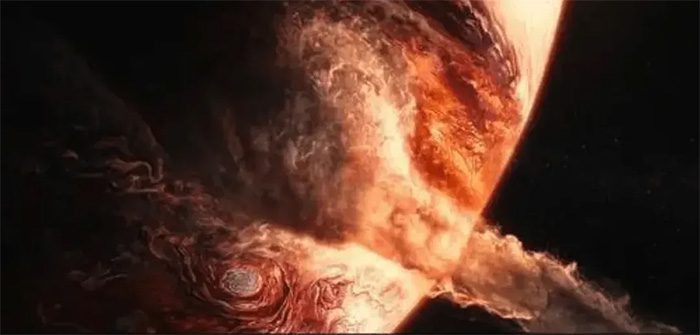
In reality, Jupiter is indeed filled with flammable hydrogen.
To ignite Jupiter, another condition is needed: one must mix oxygen and hydrogen in a specific ratio. Otherwise, Jupiter would have burned long ago due to energy explosions from impacts of celestial bodies on Jupiter, and it wouldn’t be up to humanity to discuss it.
In this mixed ratio, when hydrogen accounts for 4% to 75%, as long as the ignition conditions are met, it can catch fire. If you want to ignite Jupiter, you need to supply a large amount of oxygen to the planet; Jupiter itself is very large, and supplying oxygen would be an astronomical project.
Just providing a small amount of oxygen would ignite a small Mars, so why does Jupiter “burn” in “The Wandering Earth”?
It should be noted that the claim that Jupiter catches fire in The Wandering Earth is inaccurate. In the film, Earth is attracted by Jupiter’s gravitational force. Not only Earth, but the atmosphere on Earth is also drawn back, as the audience can see in the film that before Earth comes into contact with Jupiter, there exists a long trail of gas and dust. This gas and dust are products of the combination of Jupiter’s hydrogen and Earth’s atmosphere, and it has reached conditions that could ignite. Additionally, a large portion of Jupiter’s gas has not combined with oxygen, making it non-flammable.
Therefore, in The Wandering Earth, only the portion combined with Earth’s atmosphere can be ignited, and the thrust generated by the energy expelled from this part is sufficient to move Earth to a farther location without destroying it.
If all of Jupiter were to burn, the entire Earth would be torn apart by the immense energy released. It’s important to understand that with such a massive mass, Jupiter would explode with energy after being completely ignited. Although it may not compare with many cosmic events, it is not something humanity could withstand.
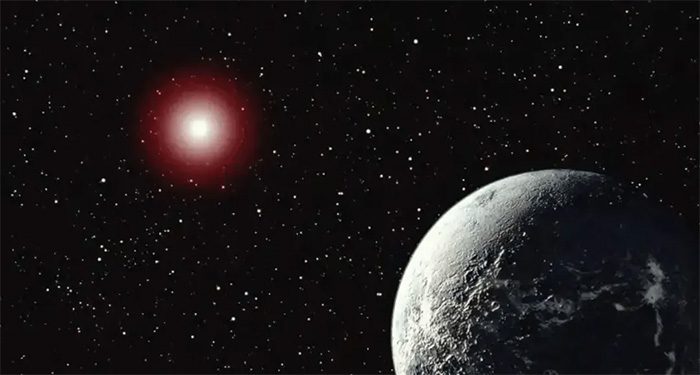
Red dwarf.
Another way to ignite Jupiter is to transform it into a star similar to the Sun, allowing it to generate nuclear fusion within, thus adding another Sun to the Solar System.
This sounds feasible; after all, Jupiter’s composition is similar to that of the Sun, and transforming Jupiter into a sun would only require a little help from humanity.
However, in reality, the mass of Jupiter is far from the required standard. To become a star like the Sun, it needs to have at least 0.08 solar masses. Jupiter has a mass double that of all the other planets in the Solar System combined, but only one-thousandth of the Sun’s mass.
If a planet with such a “light mass” were forcibly evolved into a star by humans, the result could be catastrophic, and the star within might fail to sustain nuclear fusion, leading to the planet’s demise.
Of course, there is a more optimistic scenario where Jupiter would become a red dwarf star, which is neither bright nor hot like a star. This would not be beneficial for humanity, as the light and heat produced by a red dwarf could not replace the Sun. Its lifespan is shorter than that of the Sun, and Earth would become hotter as a result. At that time, glaciers at both the North and South poles would melt under high temperatures, ultimately leading humanity to bear the consequences.
Therefore, instead of thinking about how to ignite Jupiter, why not consider how to utilize Jupiter?
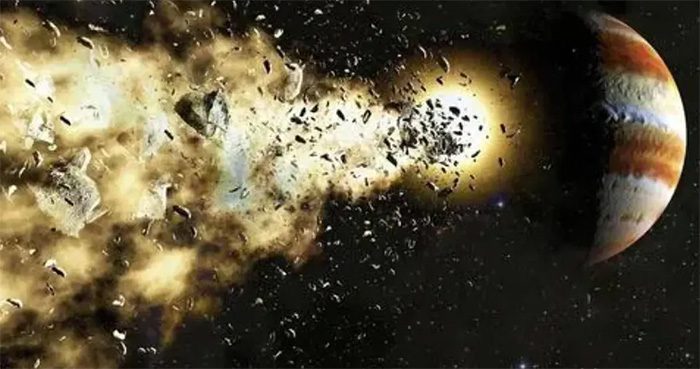
Comet being drawn into Jupiter.
Jupiter’s position in the Solar System is strategic, with rapid rotation and revolution, isolating most extraterrestrial impact events from Earth.
In 1997, humanity first observed a celestial collision event in the Solar System when a comet named Comet Levi 9 unexpectedly changed direction in the outer regions and headed straight for the Solar System.
As the largest planet in the Solar System, Jupiter has a vast gravitational range; soon after, Comet Levi 9 entered Jupiter’s gravitational pull and was drawn in. Under Jupiter’s gravitation, Comet Levi 9 was torn apart into many pieces, and the collision ended.

Comet.
According to astronomers’ calculations, the energy produced from this collision is equivalent to that of hundreds of millions of atomic bombs, enough energy to destroy Earth, but it was still bearable for Jupiter.
If Jupiter did not exist, would the ultimate destination of Comet Levi 9 have been Earth? We should be grateful for Jupiter’s existence.
Jupiter is also known as the “garbage collector” and “trash cleaner” of the Solar System, blocking most stars from the outside and cleaning up some asteroids released from around Saturn. It is precisely because of Jupiter’s existence that Earth has remained stable until now, but Jupiter’s role is much more than that.
In astronomy, to escape Earth, one needs to reach the first cosmic speed of 7.9 km/s, and to escape Earth’s gravitational pull, one must achieve the second cosmic speed of 11.2 km/s.
If you want to escape the Solar System, you need to reach the third cosmic speed of 16.7 km/s, and the speed of spacecraft currently manufactured by humans can reach this third cosmic speed. However, this speed consumes a massive amount of fuel, and the fuel carried by the spacecraft cannot support humans in escaping the Solar System.
Human curiosity knows no bounds; to explore galaxies beyond Earth, the gravitational forces of planets have played a significant role. The so-called “slingshot effect” simply refers to using planetary gravity to propel spacecraft. Propelled by planetary attraction, spacecraft can accelerate faster while consuming a minimal amount of fuel. This planet serves as a slingshot, vividly characterized as the “neighbor” of the Earth’s “neighbor,” with Jupiter playing a significant role in human space exploration missions.
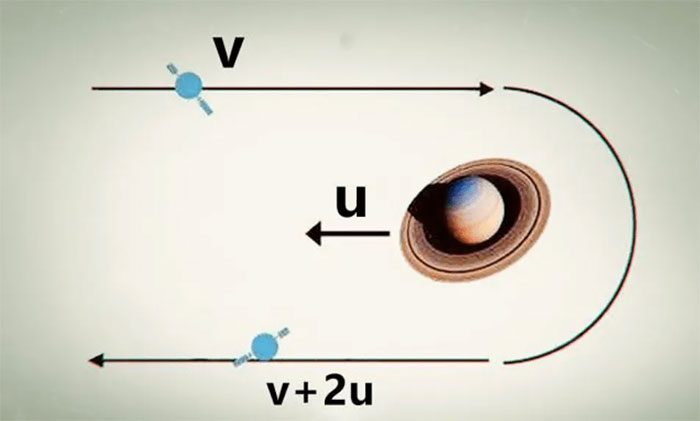
The slingshot effect of planets.
Voyager 1, launched by the United States in 1977, utilized the slingshot principle. After decades, it successfully passed the edge of the Solar System, the Kuiper Belt, and became the most distant human-made object in exploration.
During its journey out of the Solar System, it continuously used the rotational speed of Earth, the gravitational pull of Jupiter, and the gravitational force of Saturn, allowing it to outpace Voyager 2, which was launched later.
As humanity explores deeper into the Solar System, there will be more opportunities for humans to utilize Jupiter’s gravitational pull, and the use of Jupiter’s gravity may become standard in the future.
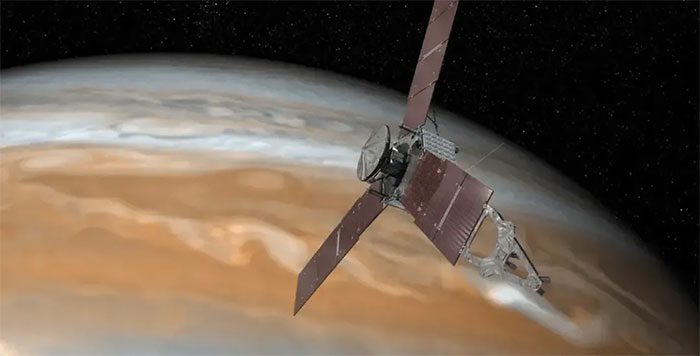
Juno spacecraft exploring Jupiter.
To better utilize Jupiter, humanity’s exploration speed of Jupiter has never ceased. Pioneer 10, launched by the United States in 1972, became the first probe to Jupiter, returning valuable data. In 1979, American Voyager 1 took some images during its passage of Jupiter and then continued deeper into space.
In 1995, the Galileo spacecraft entered Jupiter’s orbit and deployed a probe to study the planet. Galileo discovered many moons surrounding Jupiter, expanding human knowledge. Observations from Galileo revealed that some of Jupiter’s moons have salty oceans and erupting volcanoes.
Launched in 2011, the Juno mission aims to study the evolution of Jupiter and the internal structure of this planet. It is believed that humanity can fully illuminate the mysteries of Jupiter and turn it into a treasure trove for mankind.


















































